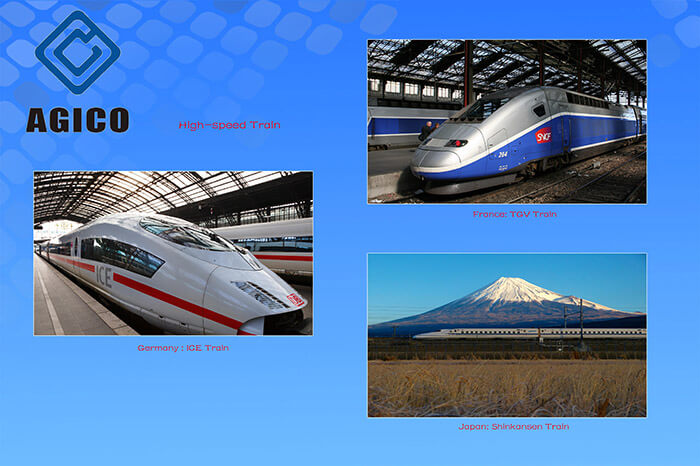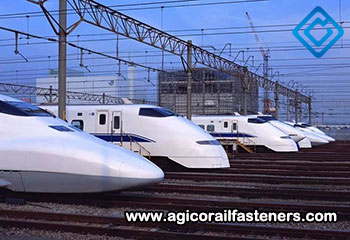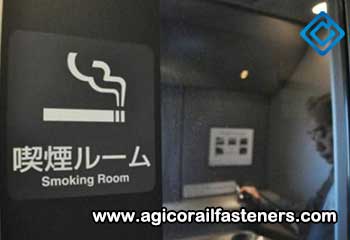The Turnout of High-Speed Railway in Foreign Countries Ⅰ
High-speed turnout is an important part of railway track structure, which plays a key role in safety, stability and passenger comfort of train operation. So the design and application of high-speed turnout have been always attracting the attention of all over the world.

Except China, there are only three countries where high-speed railway started earlier all over the world at present, including Japan, France and Germany which have already owned more mature technologies and construction experience. Due to the different national railway transport organization modes, locomotives, dynamic performance of vehicles, so their selected numbers of turnout, design parameters and horizontal alignments are not the same.
1.1 Design of axle load of turnoutIn Germany there are four types of high-speed trains which include ICE1, ICE2, ICE3 and ICEM. ICE1 and ICE2 run on train routes for both passenger and freight with axle load of 19t and the highest speed of 250km/h; ICE3 and ICEM run on train routes only for passenger with axle loads of 16t or 15t respectively and the highest speed of 300 km/h.
In France, there are five types of high-speed trains which include TGV-PSE, TGV-A, TGV-R, TGV-TMST and TGV-2N. The French high-speed railway runs only for passenger. The highest speed of TGV-PSE is 270km/h and the others 300km/h. All the trains are the same 17t weight of axle loads.
The Japanese high-speed trains include 0series, 100series, 300series, 500series, 700 series, etc. The Shinkansen routes are only for passenger with the highest speed of 210km/h, 270km/h and 300km/h respectively. Axle loads of 0 series and 100 series are 16.1t and 16t respectively, 300series 11.3t, 500series and 700series 11.1t.
In different countries there are different axle loads of train, so the turnout design in Germany must be in accordance with19t axle load of train, in France and Japan 17t.
1.2 Design parameters of turnoutDesign parameters of turnout Include: unbalanced centrifugal acceleration α (cant deficiency) and Variable rate as unbalanced centrifugal acceleration Ψ (Variable rate as cant deficiency). Design of turnout of high-speed railway must meet requirements of passenger comfort which shall be considered as main control factor. Because dynamic performance of trains in these countries are different, centripetal acceleration, variable rate of centrifugal acceleration are also different, so the design data are not entirely same.
Table 1 Design parameters| Country | Germany | France | Japan |
|---|---|---|---|
| α/m·s-2 | 0.5 | 0.65 | 0.56 |
| Ψ/m·s-3 | 0.4 | 0.49 | 0.57 |
Big number turnout for high-speed railway include two types which their lateral velocities are 160km/h and 220km/h. The former type is used in interval crossover and train’s entry or exit to high speed line. The later is only used in train’s entry or exit to high speed line. Lateral line types of big number turnouts are different in different countries. Slow circular slow line type is used in Germany, circular slow line type in France and complex circular curve line type in Japan.
Switch point of turnout for high-speed railway is basically made of special sectional rail. Big number turnouts in Germany and France, long and big switch point is manufactured by one complete rail without any welded joint so as to ensure safe driving. But in Japan switch point of No.38 turnout is welded in the middle. Rail types used by switch point: Germany for 60B, France for 60D20 and Japan for 80S.
All the blade of switch point is used structure of toe hiding, which its hiding depth is 3mm.Stock rail used in France is UIC60, the blade height is 125mm, reduced height is 17mm, 16mm in Germany and 22mm in Japan.
In order to improve the wear resistance of switch point and dynamic irregularity of blade, the design that gauge widens 15mm is made at the blade in Germany.
From the perspective of dynamics of rail wheel, the concept of equivalent taper is proposed in France, which is based on the range of train nosing movement, train speed and rail cant. When train passed the turnout at the speed of more than 250km/h, rail cant shall be 1:20. In Germany and Japan rail cant of turnout is in accordance with the interval, so it shall be 1:40.
Heel structure of switch point has a direct impact on telescopic displacement of switch point. Narrow and small rail elastic fastening system is used on the heel in Germany and France, rigid fastening system in Japan.
In order to reduce displacement of switch point, limiting stopper is set at its end in Germany, but the French think that limiting stopper may cause deformation of switch point, decrease of gauge distance, etc.
Big number switch point is so long and heavy that to reduce the force conversion and overcome displacement, the rolling slide plate is adopted by Germany. The French set antifriction coating on slide plate to reduce friction coefficient at the early period, later use the rolling slide plate with antifriction coating.
2.2 FrogActual point of frog is the solid structure, which manufacturing process is to weld a triangular block made of steel billet with the same material as the rail to long and short point rails at 250mm wide sectional place together. After welding, 4-5 blocks shall be installed behind welding section and then from here to fixing point inner gauge braces are set. Under the heel of frog a long tie plate is installed, between point rails and wing rails there are some rail bolts (or transverse bolts) to fix with long tie plates. The lack of displacement of point is eliminated by pre-reverse-deformation, which control standard is 0.5mm in range of 2m. Wing rail is made of UIC60 rail with flat elliptical holes on rail web and traction rod of point rail passed through rail web.

Big number point rail of frog is the double-toe elastic bending structure, which related wing rail is cast by high manganese steel. Long and short point rails are spliced together with Huck screws by UIC60 rails, which starting end of short point rail is inserted into long point rail in position of 50mm away from section. The section width of blade of short point rail and reduced height are about 10mm. The connecting surface of rail head and rail base is closely fitting, and at their joint there’s a 5mm guide ridge. The reduced height of blade of point rail is about 10-12mm. At heels of long and short point rails about 2mm long blocks are used, three blocks at each side of point rail and wing rail, they connected by locking bolts. Moveable point rail is about 11m in length, and the last traction position is about 3m away from fixing position. The lack of displacement of point rail is controlled in 0.5m. Wing rails are welded to common rails, the switch at the first traction position of point rail stretched out from the place under the rail with 2 “U” shape pallets which support point rails to slide on slide plate. In Japan wing rails are frame structure made of high manganese steel, long and short point rails are also made of high manganese steel by casting with sliding joints which belong to single elasticity.
We receive enquiries in English, Español (Spanish), Русский язык (Russian), Français (French) and العربية (Arabic). Our professional team will reply to you within one business day. Please feel free to contact us!



